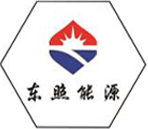
Dec . 10, 2024 06:55
Back to list
Safety Relief Valve Mechanism for Pressure Regulation and System Protection
Safety Relief Valves Understanding Their Importance and Functionality
In various industrial applications, safety is paramount. One of the critical components ensuring safety in pressure systems is the safety relief valve (SRV), or in Arabic, صمام تنفيس الأمان. These valves play a vital role in protecting equipment and personnel from the dangers associated with overpressure situations.
What is a Safety Relief Valve?
A safety relief valve is a mechanical device designed to automatically release pressure from a system when it exceeds a predetermined threshold. Its primary function is to prevent equipment failure, explosions, or catastrophic accidents that could result from excessive pressure build-up in vessels or pipelines.
How Does It Work?
The operation of a safety relief valve is relatively straightforward. The valve is set to open at a specific pressure level—the set pressure. As the internal pressure of a system rises due to heat expansion, chemical reactions, or other factors, the valve begins to lift off its seat when the pressure reaches this critical point. This action allows for the safe release of excess pressure, restoring safe operating conditions.
Once the pressure drops back below the set level, the valve automatically closes, sealing the system once again. The mechanism ensures that the valve only operates when necessary, thereby minimizing the loss of valuable gases or fluids and reducing the potential for environmental contamination.
Types of Safety Relief Valves
Safety relief valves come in various types, each designed for specific applications. The two primary categories are
1. Safety Valves These are typically used for compressible fluids (like gases) and operate based on the principles of physics and the characteristics of the fluid. They are often found in steam, gas, and vapor applications.
2. Relief Valves These are used for incompressible fluids (like liquids) and are generally employed in various hydraulic systems. Their operation is similarly based on maintaining pressure within safe limits.
Applications of Safety Relief Valves
صمام تنفيس الأمان

Safety relief valves are used in a multitude of industries, including
- Oil and Gas In oil refineries and natural gas plants, SRVs help manage pressure in pipelines and storage tanks, preventing blowouts or leaks.
- Chemical Processing In chemical manufacturing, SRVs protect reactors and distillation columns from overpressure caused by exothermic reactions.
- Power Generation In power plants, boiler systems rely on SRVs to prevent excessive steam pressure that could lead to devastating explosions.
- Pharmaceuticals In the pharmaceutical industry, maintaining precise pressure levels is crucial for safety and product integrity. SRVs are employed in various processing equipment to ensure compliance with safety standards.
Importance of Maintenance
Like any mechanical device, safety relief valves require regular maintenance to function correctly. Operators must periodically test and inspect valves to ensure they open at the correct pressure and reseal appropriately. Neglecting maintenance can lead to valve malfunction, increasing the risk of accidents.
Regulatory Standards
To ensure safety, various regulatory bodies, such as the American Society of Mechanical Engineers (ASME) and the Occupational Safety and Health Administration (OSHA), set strict guidelines for the design, installation, and maintenance of safety relief valves. Compliance with these standards is essential for the safe operation of pressure systems.
Conclusion
Safety relief valves are crucial components in maintaining the safety and integrity of various industrial processes. By automatically regulating pressure and preventing overpressure situations, these valves protect both personnel and equipment from potential hazards. Their importance cannot be overstated, as they play a vital role in preventing catastrophic failures that can arise from excessive pressure build-up. Operators must prioritize the maintenance and inspection of safety relief valves, adhering to regulatory standards to ensure optimal performance and safety in their systems. Investing in the proper functioning of SRVs not only safeguards lives but also promotes operational efficiency and environmental protection, making them an indispensable part of modern industrial practices.
Next:
Latest news
-
Safety Valve Spring-Loaded Design Overpressure ProtectionNewsJul.25,2025
-
Precision Voltage Regulator AC5 Accuracy Grade PerformanceNewsJul.25,2025
-
Natural Gas Pressure Regulating Skid Industrial Pipeline ApplicationsNewsJul.25,2025
-
Natural Gas Filter Stainless Steel Mesh Element DesignNewsJul.25,2025
-
Gas Pressure Regulator Valve Direct-Acting Spring-Loaded DesignNewsJul.25,2025
-
Decompression Equipment Multi-Stage Heat Exchange System DesignNewsJul.25,2025

